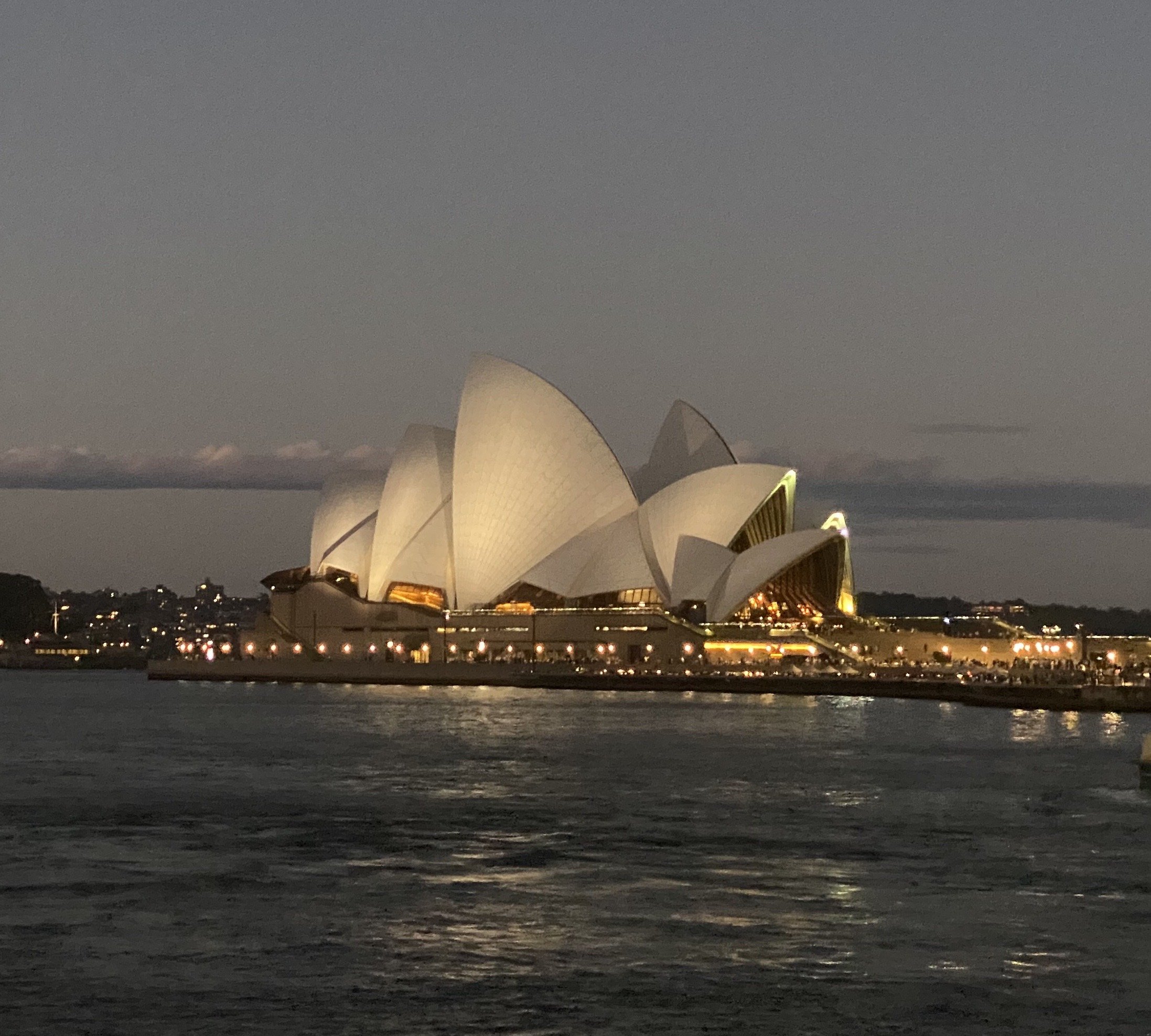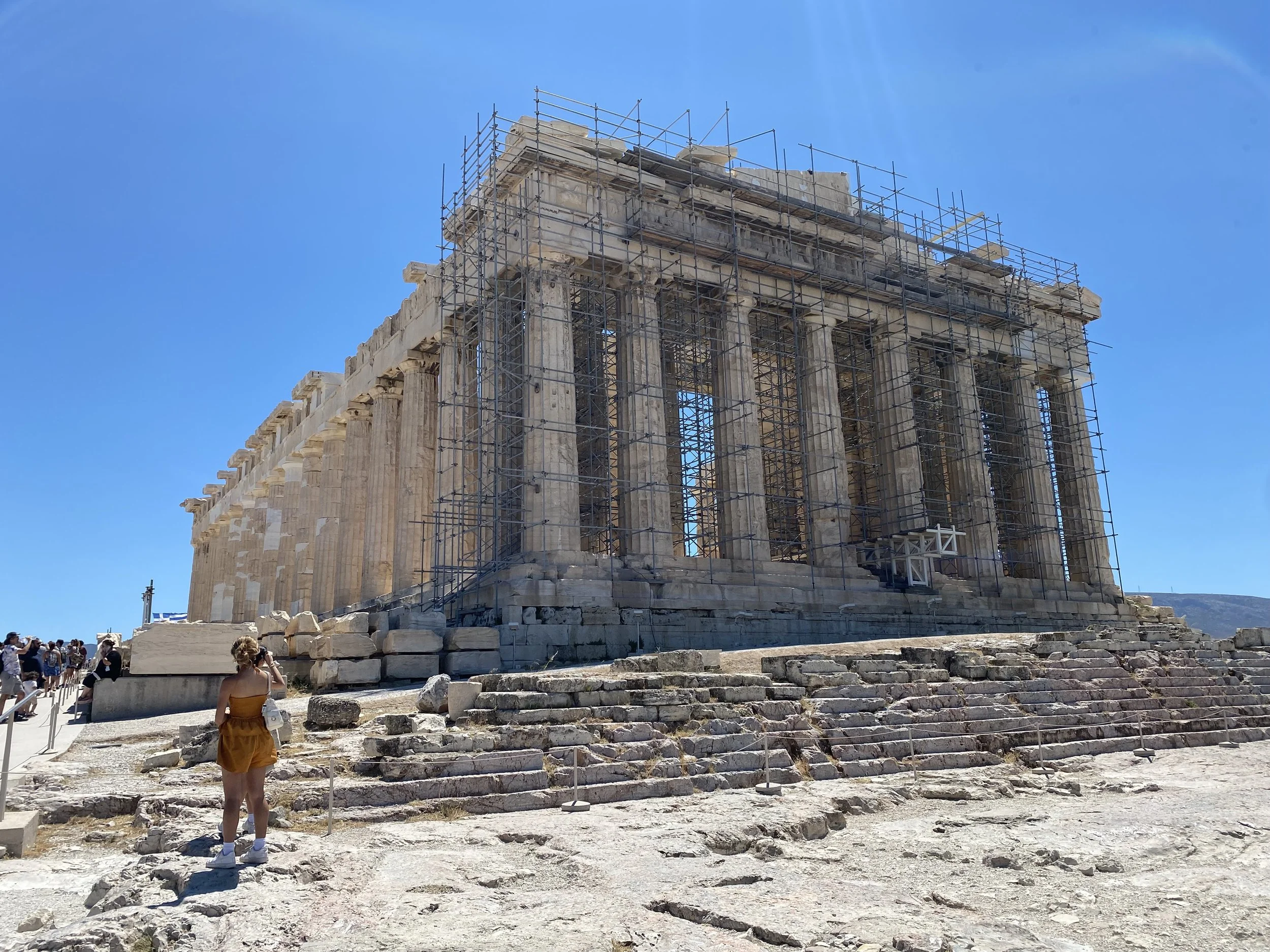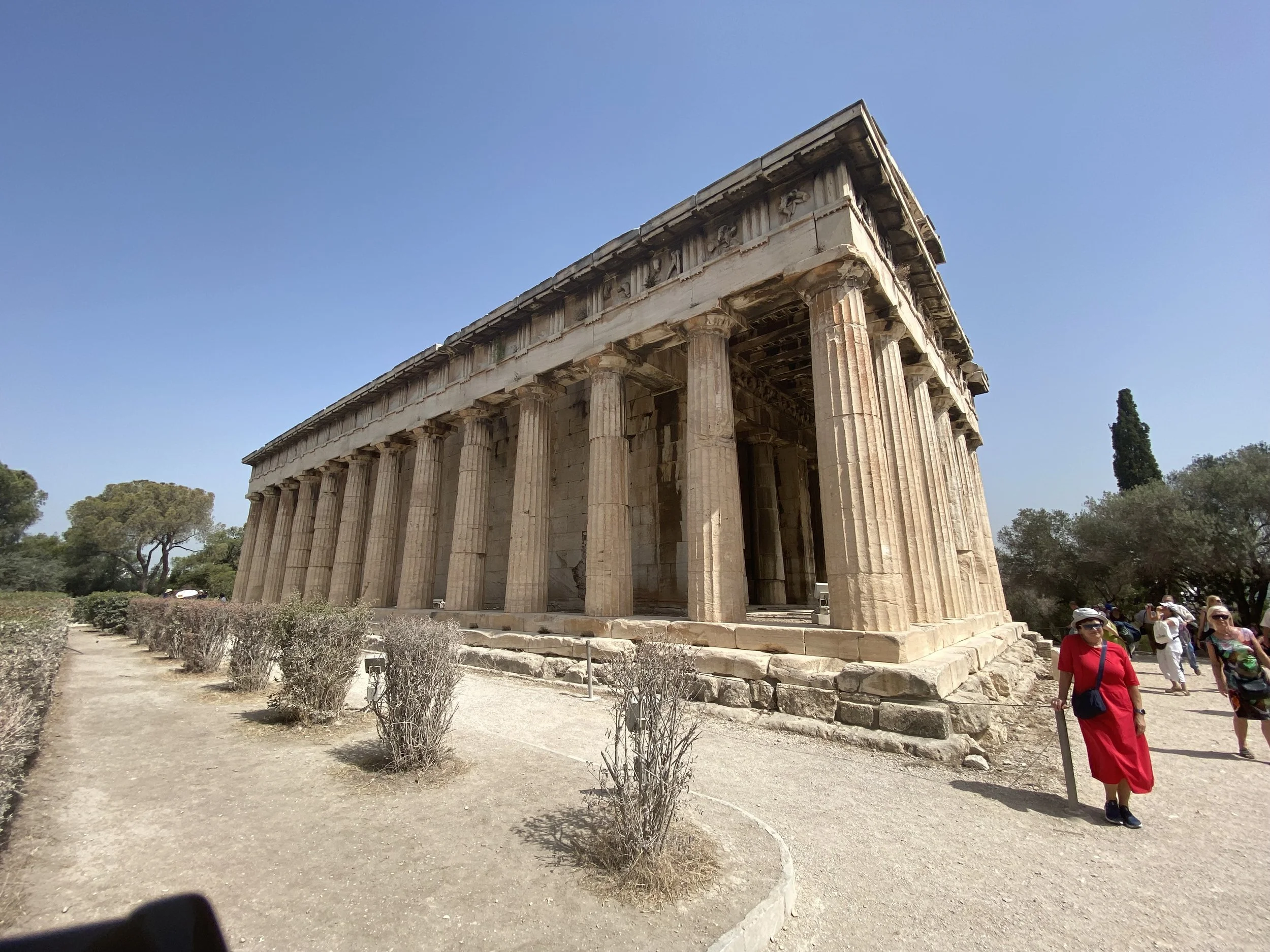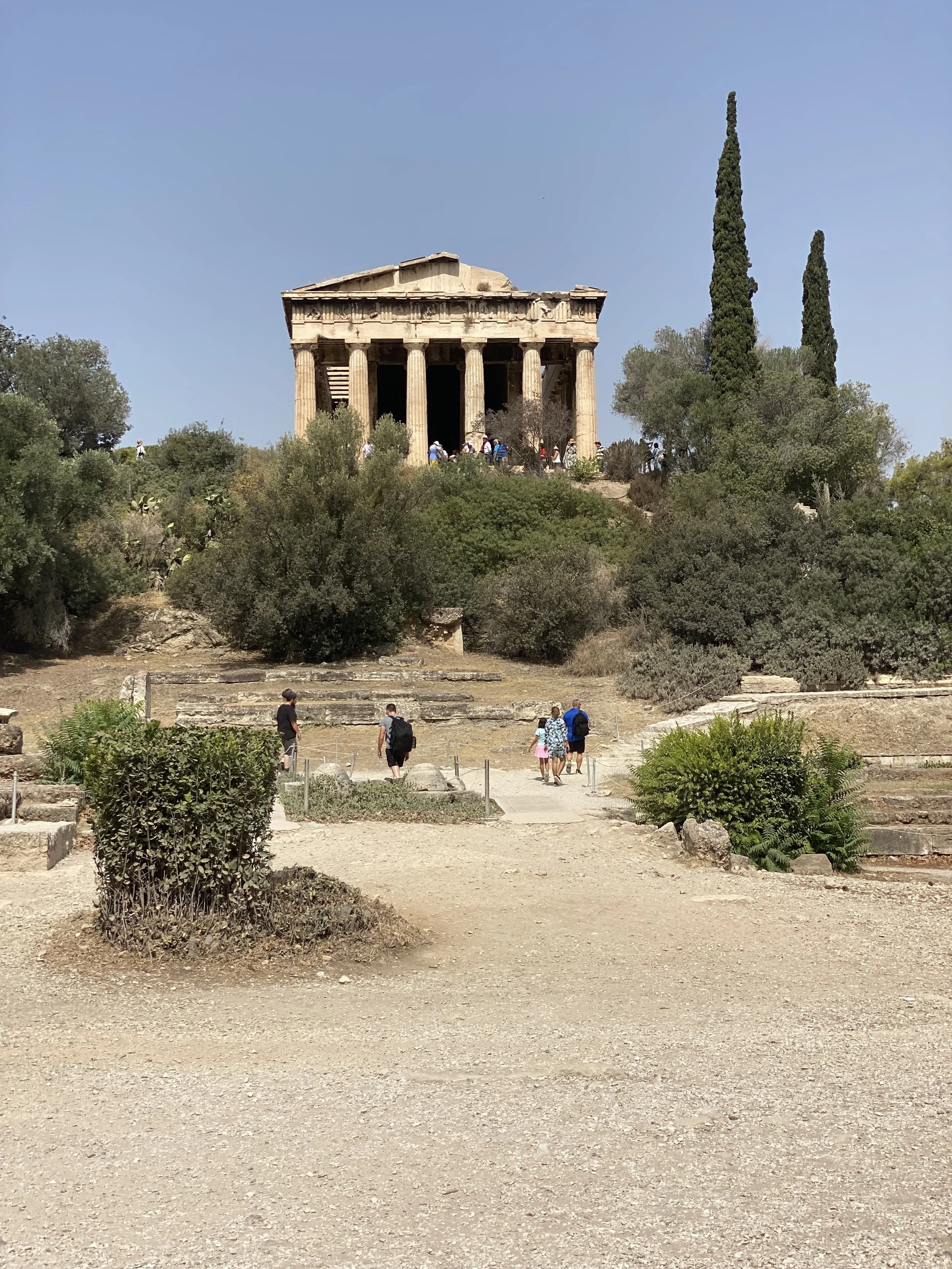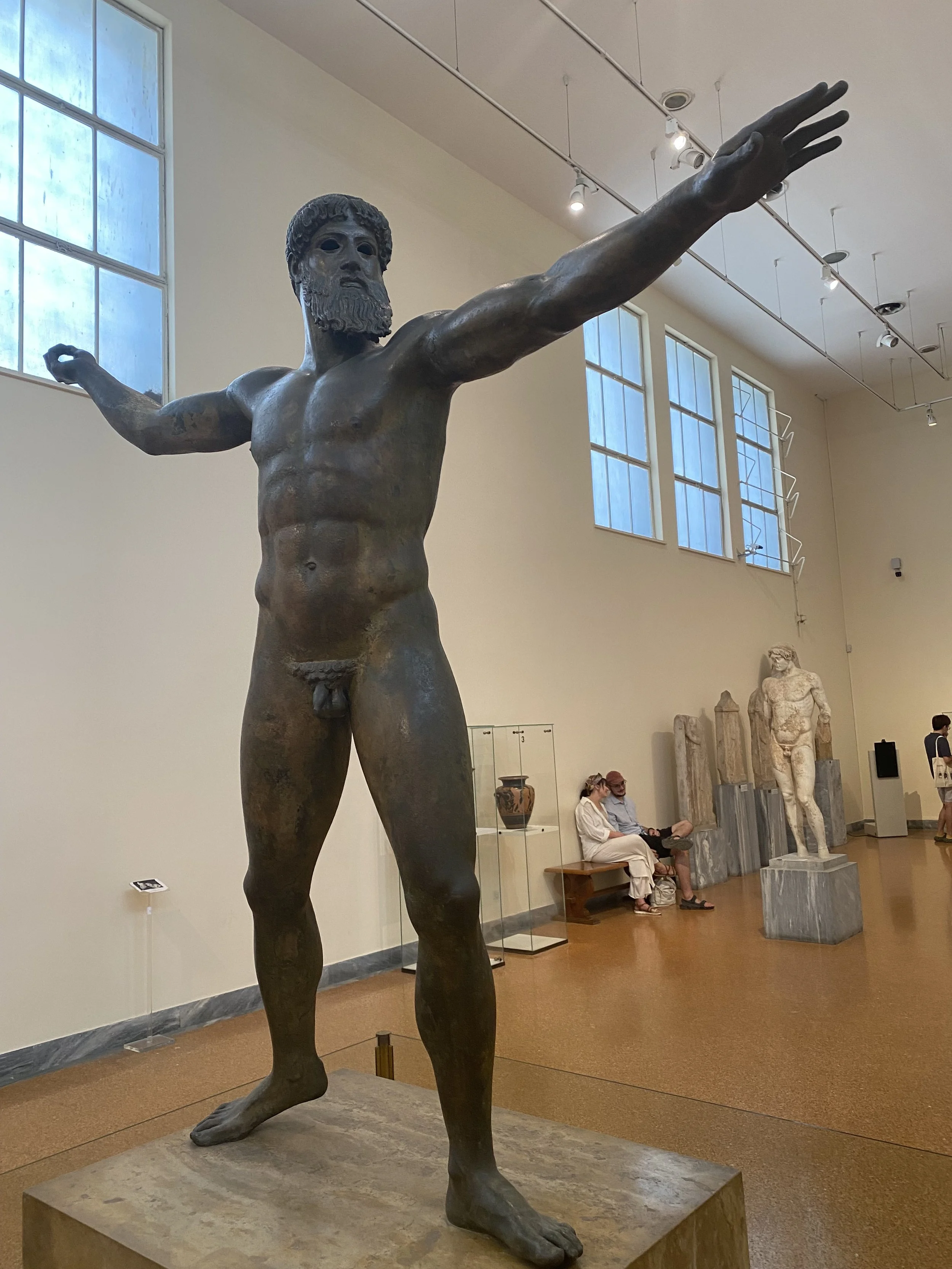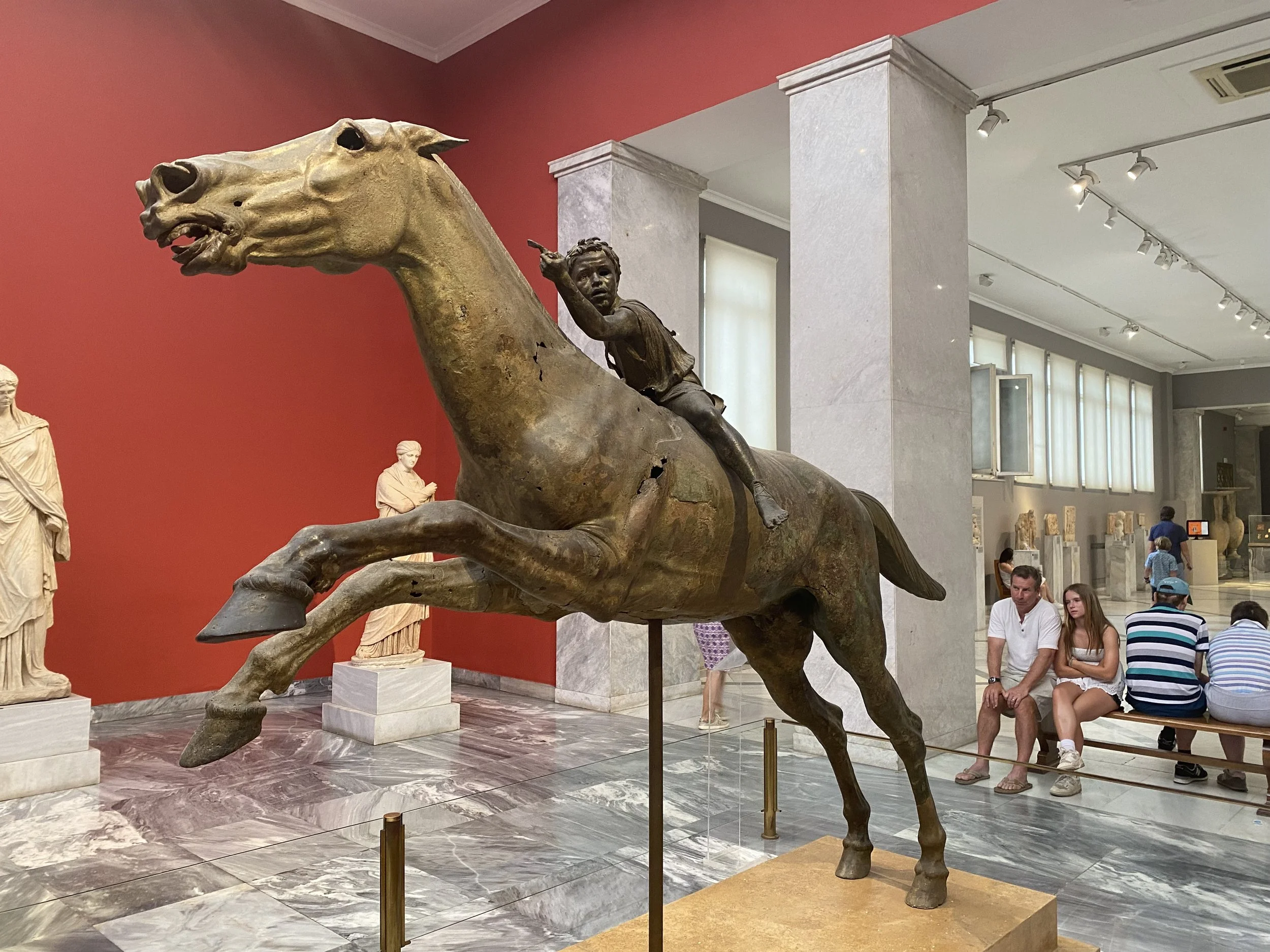sydney
Helen and I haven’t visited Sydney for over 30 years (where did the time go?), and we now wonder why we left it so long?
Sydney is the largest city in Australia, located on the country’s east coast and is the capital of New South Wales. Built around one of the world's most beautiful natural harbours, Sydney has countless bays, inlets, and famous beaches such as Bondi (technically not inside the harbour), Manly and Watson’s Bay. Iconic landmarks like the Sydney Opera House and Harbour Bridge are instantly recognised. While ferries are a part of daily life and offer a scenic way to get around. The city has a mild climate, a diverse population, and is a major centre for business, culture, and tourism.
It’s a melting pot of cultures, with a strong Asian influence, especially in cuisine—from Thai and Vietnamese to Chinese dumplings and Japanese sushi.
It's also famous for outdoor living, great food, and scenic coastal walks such as the invigorating Bondi to Coogee cliff top walk, or national parks such as the Blue Mountains offering epic hikes and lush scenery.
The Sydney Opera House is more than just Australia’s most iconic building—it’s a global symbol of creativity and design. With its soaring sail-like architecture perched on the edge of sparkling Sydney Harbour, this UNESCO World Heritage site is a feast for the eyes and the soul. Step inside to experience world-class performances, take a behind-the-scenes tour, or simply sit at a nearby café and soak in sweeping views of the harbour and the Sydney Harbour Bridge.
Affectionately nicknamed “The Coathanger,” the Sydney Harbour Bridge is an engineering wonder and a beloved city landmark. Stretching across the harbour, it’s not just for admiring from afar—walk, cycle, or take the adrenaline-pumping Bridge Climb to the top for breathtaking panoramic views of the skyline, Opera House, and beyond.
Sun, surf, and sand—Bondi Beach is the beating heart of Sydney’s beach culture. Just a short hop from the city, Bondi dazzles with golden sands, world-class waves, and a relaxed, coastal vibe. Whether you’re catching a wave, lounging under the sun, or walking the stunning Bondi to Coogee coastal trail, it’s a slice of Sydney life you don’t want to miss. I suggest taking the 333 North Bondi bus from Circular Quay rather than taking the train to Bondi Junction and then taking the same 333 bus which will now be packed.
Tucked beside the Opera House, the Royal Botanic Garden is a lush, tranquil retreat right in the city centre. Wander among exotic blooms, sprawl out on the lawns, or snap the perfect photo from Mrs Macquarie’s Chair—offering one of the best views of the Opera House and Harbour Bridge. The gardens are the oldest in Australia, dating back to 1816, you can still find the original farm garden if you look hard enough.
Step back in time in The Rocks, the historic cradle of Sydney. With its cobblestone lanes, colonial buildings, and lively markets, this is a captivating blend of old and new. Browse through the Museum of Contemporary Art, sip a drink in a heritage pub such as The Fortune of War (Sydney’s oldest), or dive into Sydney’s early convict and settler stories at one of the local museums, see The Rocks Discovery Museum.
For a wildlife adventure with a view, head to Taronga Zoo. Overlooking Sydney Harbour, this world-class zoo is home to more than 4,000 animals—from Aussie icons like koalas and kangaroos to exotic creatures from around the globe. For an unforgettable experience, try an overnight stay among the animals with the Roar and Snore experience. Also, take a look at this option with Captain Cook Cruises that includes entry and return ferries to and from Circular Quay.
Nestled near the Royal Botanic Garden, the Art Gallery of NSW showcases a rich collection of Australian and international works, spanning centuries and styles.
Buzzing with life day and night, Darling Harbour is Sydney’s playground. With waterfront restaurants, shops, and attractions like SEA LIFE Aquarium and directly across the pedestrian Pyrmont Bridge, the excellent and free Australian National Maritime Museum, there’s something for everyone. It’s an ideal spot for friends and family where you can just sit and watch the world go by with a gelato in hand.
A true seafood lover’s paradise, the Sydney Fish Market is a feast for the senses. As the largest market of its kind in the Southern Hemisphere, it’s where the ocean’s freshest catch meets culinary adventure. Watch the daily seafood auction in action, grab a plate of freshly shucked oysters, or indulge in a sashimi platter right by the waterfront. Whether you're a foodie on the hunt for premium ingredients or just craving some crispy fish and chips with a view, this bustling market delivers an unforgettable taste of Sydney.
Hop on the ferry from Circular Quay for a scenic ride to Manly Beach, a charming seaside escape with a laid-back vibe. From the ferry terminal walk down the pedestrian shopping strip known as The Corso to the ocean beach. Here, surf culture meets coastal beauty, and the Manly Scenic Walkway invites you to explore rugged cliffs, hidden coves, and sweeping ocean views.
Vibrant, flavourful, and full of energy, Sydney’s Chinatown (Thai town and Korea town are close by) is a sensory celebration. Stroll through lantern-lit streets, savour mouthwatering Asian cuisine, and browse bustling markets. During Chinese New Year, the whole area bursts into colour with dragon dances, fireworks, and lots of food!
At the heart of Melbourne, you’ll find Federation Square—a bold, modern architectural space that houses museums, galleries, and lively open-air events. It’s the place to soak in Melbourne’s artistic side while also indulging in some excellent food at one of the local restaurants or cafes. Just a stone's throw away is the iconic Flinders Street Station, with its distinctive yellow facade and green dome, offering a snapshot of the city’s history and charm.
Escape the urban buzz and find tranquility in the Royal Botanic Gardens. Just a stone's throw from the city center, it’s a lush oasis where you can unwind by the lake, take a leisurely walk through themed gardens, or even embark on a guided Aboriginal Heritage Walk to learn about the city’s indigenous roots. The gardens are a true testament to Melbourne’s love of green space and serenity.
Melbourne’s culinary scene is as diverse and dynamic as the city itself. Whether you’re after a gourmet meal, a quick bite, or a hidden gem in a laneway, you’re never far from something delicious. The Queen Victoria Market is a food lover’s paradise, offering everything from fresh produce to gourmet treats. If you’re craving something more exotic, explore Melbourne’s thriving Asian food scene in suburbs like Richmond, Footscray, or Springvale.
If you’re after beach vibes, St Kilda is the place to be. Just a short tram ride from the city center, this coastal suburb offers a fantastic combination of outdoor relaxation and nightlife. Wander along the iconic St Kilda Pier, catch a sunset, or indulge in the area’s famous cake shops. If you’re lucky, you might even spot some local penguins by the pier at dusk!
Melbourne is a city that loves to celebrate. Whether it's the Melbourne International Comedy Festival, the Melbourne Food and Wine Festival, or the Melbourne International Film Festival, there’s always something happening that reflects the city’s creative spirit. And, of course, Melbourne Cup Day—the “race that stops the nation”—is a celebration of horse racing, fashion, and the city’s love of a good time!
Sports fans, rejoice! Melbourne is undeniably the sporting capital of Australia. From the electric atmosphere at the Melbourne Cricket Ground (MCG) to the high-energy Australian Open tennis tournament, the city offers plenty for those passionate about sport. Even if you’re not a cricket or AFL fan, the MCG and nearby Rod Laver Arena are landmarks worth visiting for their iconic status and sheer scale.
Melbourne is Australia’s fashion capital, and its shopping scene is unparalleled. From the high-end boutiques of Collins Street to the eclectic vintage finds at Fitzroy’s Brunswick Street, the city offers something for every style. If you prefer unique, quirky goods, the Camberwell Sunday Market and South Melbourne Market are fantastic places to pick up one-of-a-kind treasures.
Located near the Yarra River, the Royal Botanic Gardens (entry is free) are a peaceful escape from the city’s hustle and bustle. It’s a beautiful, expansive green space perfect for picnics, walks, or just relaxing. Don't miss the Ian Potter Foundation Children's Garden, Punt Tours on the lake, and a full summer’s program of theatre and cinema for both young and old.
A hub for culture, dining, and entertainment, Federation Square is an iconic Melbourne landmark. It houses the Australian Centre for the Moving Image, which is the museum of film, tv, videogames and art; the Ian Potter Centre, the home of indigenous and non-indigenous art from colonial times to the present day, and a range of bars, cafes, and restaurants. It’s also home to many festivals and events throughout the year. The National Gallery of Victoria further down on St Kilda Road is Australia’s oldest and most visited art museum. It has an extensive collection of international and Australian art, spanning from ancient to contemporary pieces. These all have free entry except for special exhibition’s.
The Melbourne Museum is one of Australia’s leading cultural institutions, showcasing everything from dinosaurs and indigenous culture to science and technology exhibits. The Royal Exhibition Building, located next to the museum, is a UNESCO World Heritage site and a beautiful example of Victorian architecture.
A historic market located in the heart of the city, Queen Victoria Market is a great place to explore fresh produce, gourmet foods, and souvenirs. It also offers night markets in both summer and winter with food stalls, live music, and entertainment.
For a relaxing day by the sea, head to St Kilda Beach. Just a short tram ride from the city, it’s a popular spot for swimming, sunbathing, or enjoying a walk along the iconic pier, in the evening you may be lucky enough to see the Little Penguin that call the pier home. Luna Park, the iconic amusement park, is also located here. Luna Park is an old-school amusement park with a giant, smiling face entrance. It features classic rides, games, and plenty of family-friendly fun. It’s been a Melbourne landmark for over 100 years.
Melbourne’s historic arcades are great places to shop and explore the city’s rich Victorian-era architecture. The Royal Arcade has beautiful glass ceilings and is home to unique boutiques, while the Block Arcade offers a luxurious shopping experience with a European feel.
Melbourne is known for its vibrant Italian culture, and Lygon Street in Carlton is the heart of this heritage. The street is lined with Italian cafes, restaurants, and gelato shops. It’s a great place for a meal or just to stroll and soak up the atmosphere.
A national war memorial located in Kings Domain, the Shrine of Remembrance offers a moving tribute to Australia’s war veterans. You can also climb to the top for panoramic views of Melbourne.
A 30-minute drive from Melbourne, Brighton Beach is famous for its colourful bathing boxes. These iconic structures make for a great photo op, and the beach is ideal for swimming or walking.
If you’re a sports fan, a visit to the MCG is a must. It’s one of the world’s most famous sports stadiums and home to Australian rules football, cricket, and many other events. You can also visit the National Sports Museum housed within the stadium or enjoy a tour of the stadium hosted by an ex-AFL star.
The grand architecture of the State Library of Victoria is impressive, and it’s one of the oldest and largest public libraries in the country. Inside, the La Trobe Reading Room is a highlight, and you can also explore exhibitions on Australian history and culture. There is an exhibit on the infamous bushranger Ned Kelly where you can view parts of his armour that he wore in the Glenrowan siege of 28 June 1880. Entry to the Library and it’s exhibits are free.
Melbourne’s Chinatown, located around Little Bourke Street, is the oldest in the Southern Hemisphere. It’s a great spot to explore the city’s Chinese heritage, sample delicious Asian cuisine, and visit the beautiful Dr. Sun Yat-sen garden.
If you enjoy nature and heritage railways, take a trip to the Dandenong Ranges. You can ride the Puffing Billy Railway, an old-fashioned steam train that travels through lush forests and charming mountain villages.
Although a bit outside Melbourne, the Great Ocean Road is one of Australia’s most scenic coastal drives. Highlights include the Twelve Apostles, Loch Ard Gorge, and Bells Beach. It’s a great day trip or weekend getaway from the city.
Another popular day trip from Melbourne, Phillip Island is famous for its Penguin Parade, where you can watch little penguins return to shore at dusk. The island also has lovely beaches, wildlife parks, and scenic coastal views.
Public Transport
Myki Card (Essential for Public Transport) Myki is Melbourne’s electronic ticketing system, used across trains, trams, and buses. How it works: Purchase a Myki card at any train station, online, or at 7-Eleven stores. Top-up your Myki card with credit (available via the Myki website, app, or at Myki machines). Touch on and touch off when using trains or buses. For trams, you only need to touch on at the start of your trip. Where to use: Myki works on trains, buses, trams, and regional trains in Melbourne and surrounding areas. Visitor Pack: If you’re a tourist, consider getting a Myki Visitor Pack that comes preloaded with credit and offers discounts on major attractions.
Free Tram Zone City Centre (CBD) The Free Tram Zone covers the central business district (bounded by La Trobe, Spring, Spencer, and Flinders Streets). You can travel freely within this zone without needing a Myki card. Great for sightseeing, as major attractions like Federation Square, Flinders Street Station, and the Royal Botanic Gardens fall within this area.
Trains Melbourne’s train network is extensive and connects the city to both the inner suburbs and regional Victoria.
Main Stations The main central hub is Southern Cross Station, but Flinders Street Station and Melbourne Central are also key stations. Trains run frequently, especially during peak hours, with services every 10-15 minutes. Metro trains run across several lines with various routes heading to different suburban and regional areas.
Trams Melbourne has one of the largest tram networks in the world, covering much of the city and the inner suburbs. Trams are great for short distances, but can be slower due to traffic. If traveling outside the Free Tram Zone, remember to touch on and touch off with your Myki card. City Circle Tram (Route 35): A free service looping around central Melbourne, providing a great way to explore major attractions like the Royal Exhibition Building, Melbourne Museum, and Federation Square.
Buses Buses serve the areas that are not covered by trains or trams, especially outer suburbs and more remote destinations. Bus Stops: Buses have designated stops along their routes, and timetables are available at stations or online. They are less frequent than trains or trams, but still an important mode of transport, particularly for local commutes.
Cycling and Walking Bike Share Melbourne offers a Bike Share program where you can hire bikes for short trips around the city. There are numerous docking stations located around the CBD. You can sign up and pay for bike rentals through the Melbourne Bike Share app. Cycling Infrastructure: Melbourne has a growing network of dedicated bike lanes and paths, making it a bike-friendly city. Popular routes include the Capital City Trail, a 29-km loop around the inner city, and the Yarra River Trail. Bike Rentals: Many bike shops around the city offer rentals for exploring the city or heading out on longer rides.
Walking Melbourne is a very walkable city, especially within the central business district (CBD), where most of the key attractions are located. The city is laid out in a grid pattern, making it easy to navigate by foot. Take a self-guided walking tour or explore Melbourne’s famous laneways, which are filled with cafes, restaurants, and vibrant street art.
Ride-Sharing (Uber, Lyft, etc.) Uber, Ola, and DiDi are widely available throughout Melbourne, providing a convenient and often more affordable alternative to traditional taxis. Simply download the app (Uber or others), enter your pick-up and drop-off locations, and a driver will arrive to take you to your destination. Ride-sharing services are great for door-to-door transport, especially if you're traveling outside public transport hours or to less accessible locations.
Taxis Taxis are available for hailing on the street or via phone, or you can use taxi apps like 13CABS or Ola. Taxi ranks are located throughout the city, particularly near train stations, major shopping centers, and tourist areas. Cost: Taxi fares are generally higher than those of ride-sharing services, and they are charged by distance and time.
Renting a Car If you plan to explore beyond Melbourne, such as the Great Ocean Road, Yarra Valley, or Phillip Island, renting a car is a great option. Rental companies such as Hertz, Avis, Budget, and Europcar have offices at Melbourne Airport and across the city.
Driving in Melbourne The city center can be quite busy, and parking is often expensive. It's advisable to check parking rates in advance, particularly in popular areas. Trams always have the right of way in Melbourne, so be cautious around tram stops and tracks.
Airport Transfers
Melbourne Tullamarine Airport (MEL)
SkyBus: A popular and affordable option for getting from Melbourne Airport to the CBD. It runs regularly, and the trip takes about 20-30 minutes, dropping passengers at Southern Cross Station. Taxi/Ride-sharing: Taxis and ride-sharing services like Uber can take you directly to your accommodation. The journey takes about 20-30 minutes, depending on traffic. Car Rentals: If you want the flexibility of a rental car, you can pick one up directly from Melbourne Airport.
Avalon Airport (AVV) Avalon is a smaller airport located around 50 km from Melbourne. SkyBus also operates between Avalon Airport and the CBD. Alternatively, taxis or ride-sharing services are available.
Melbourne’s Free Services
Free Tram Zone Central Melbourne (CBD) is covered by the Free Tram Zone. This means you can travel for free within this area without needing a Myki card. This zone includes major attractions such as Federation Square, Flinders Street Station, Southbank, and Queen Victoria Market.
City Circle Tram (Route 35)
The City Circle Tram is another free service that loops around the CBD and passes key landmarks such as the Royal Exhibition Building, Melbourne Museum, and Docklands. The tram runs every 12 minutes, making it a convenient way to tour Melbourne without spending a cent.
Useful Apps for Getting Around PTV (Public Transport Victoria) The PTV app provides real-time information on trains, trams, and buses in Melbourne, including timetables, routes, and Myki top-up options.
Google Maps A reliable app for directions, whether you’re walking, using public transport, or driving.
Uber/Ola/DiDi Apps for booking ride-share services, with live tracking and fare estimates.
Melbourne Bike Share If you’re cycling, this app allows you to rent and return bikes across the city.
Tips for Getting Around Melbourne Peak Hours Melbourne’s public transport can get busy during rush hour (around 7:30-9:30 AM and 4:30-6:30 PM), so plan your travel accordingly.
Weather Melbourne’s weather is unpredictable, so dress in layers and carry an umbrella in case of rain.
Traffic If you're driving, be prepared for congestion in the CBD, especially during peak times.
